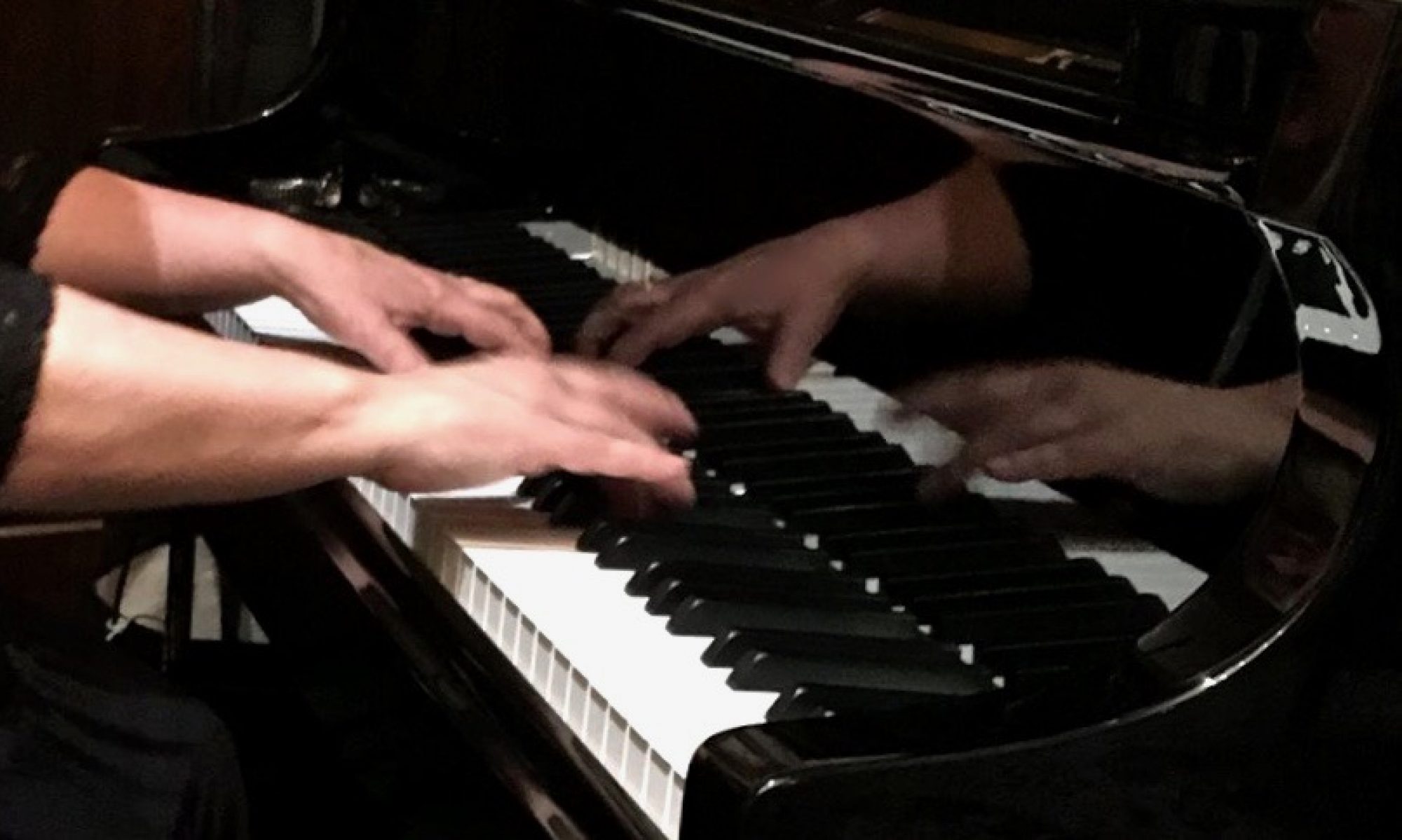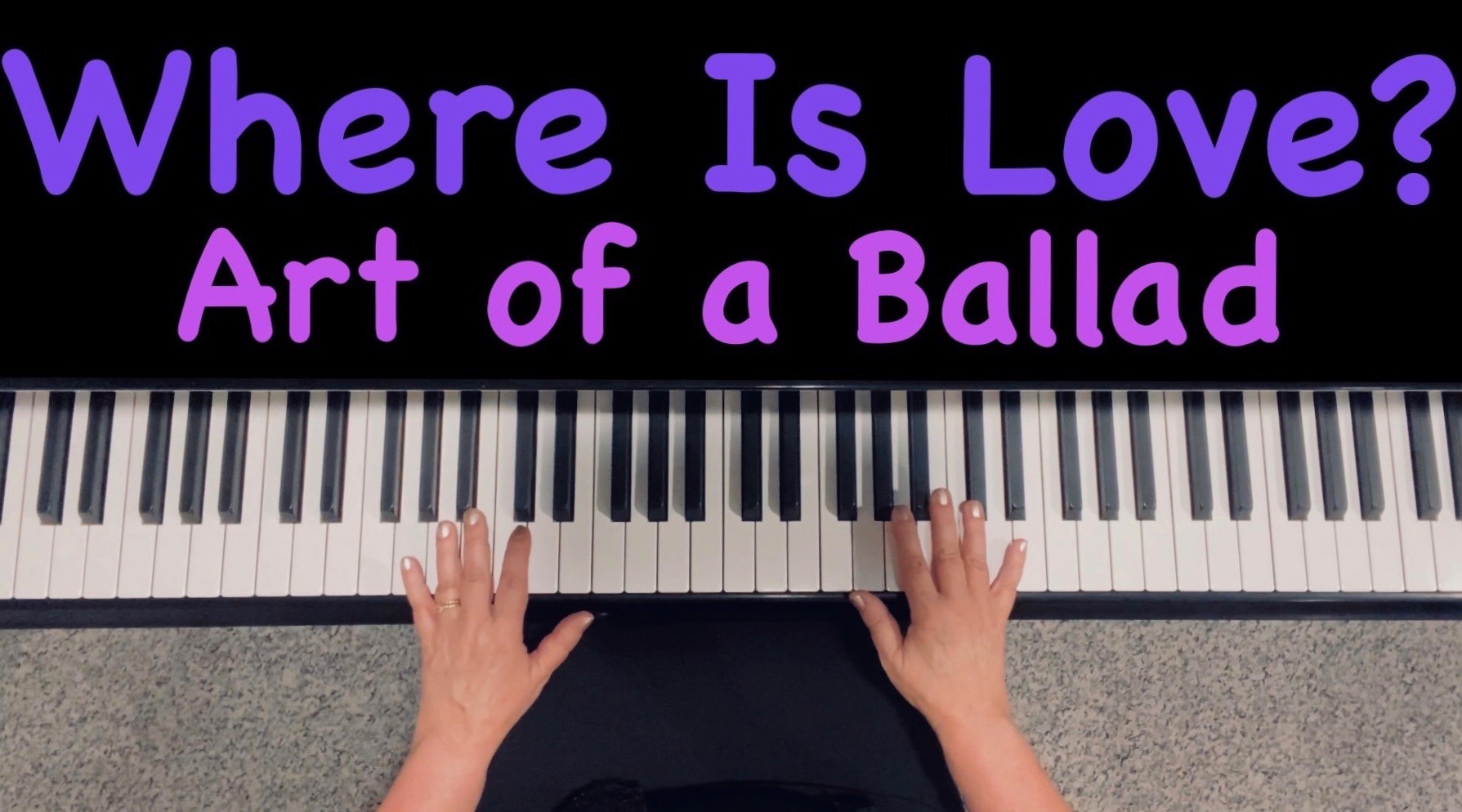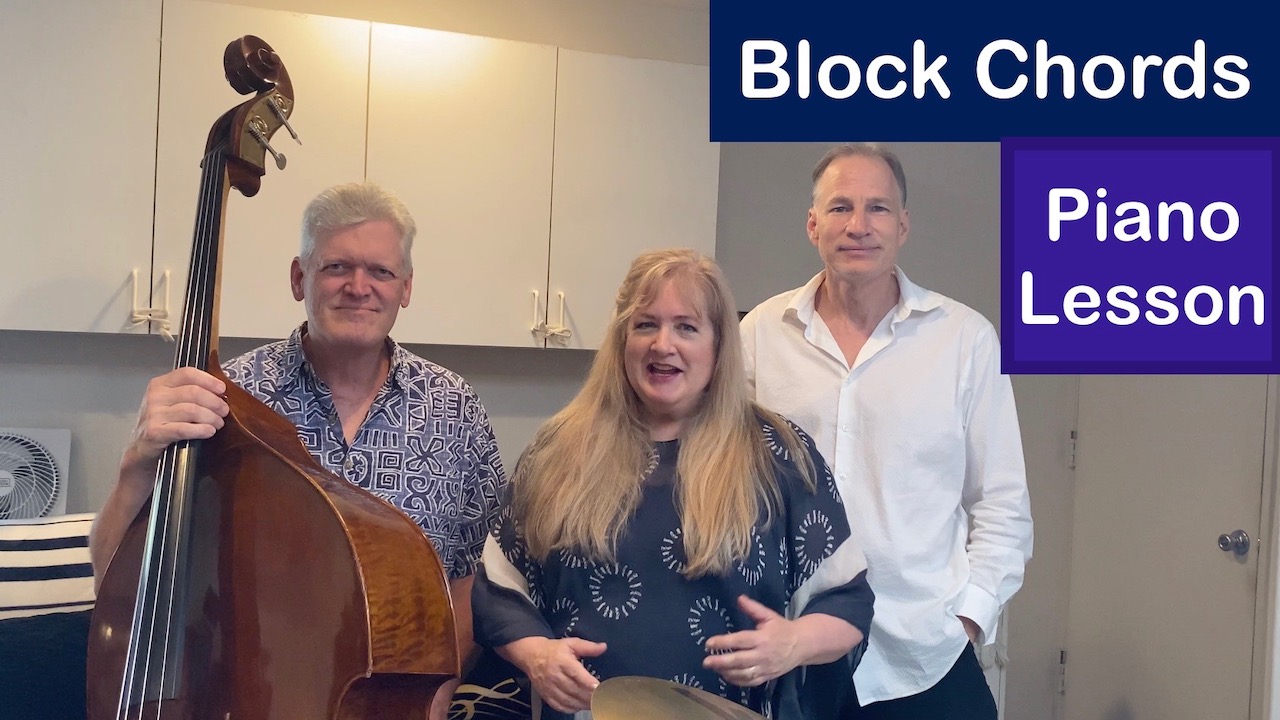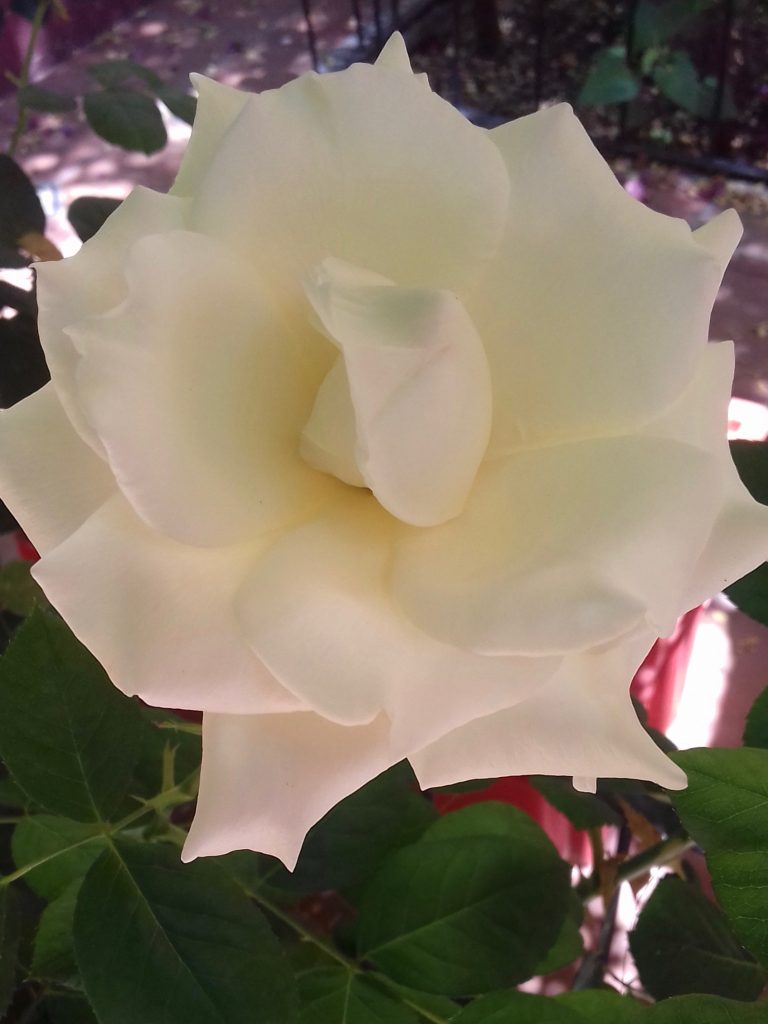The gorgeous Johnny Mandel composition A Time For Love may be played in a variety of ways. The day I heard Emmet Cohen’s exquisite performance of this tune I became transfixed, not only with transcribing his dynamic cadenza/coda, but also took a deep dive into what he and other artists did with this tune, eventually combining ideas into my own version of A Time For Love. Let’s go down the rabbit hole to explore some favorite harmonic options!
The next step of this journey led to finding a chart in a collection of tunes called, The Standards Real Book (Sher Publications). The tune is printed in the key of F Major -same key played by the Emmet Cohen Trio – although this standard is often performed by other musicians in the key of Bb. While the Sher book is a terrific resource for tunes, chords, and lyrics, just about every jazz pianist (myself included), likes to add their own harmony and personalize their arrangements, at least a little. So I set out to change up a few chords and create some flowing bass lines in a few places, and gave the ballad a solo piano approach, instead of the book’s suggested Double X Samba treatment!
Watch this tutorial to explore several options. Worksheets are printable under the “Downloads” column on this website. I’ve written out solo piano voicings for a few tricky areas which differ from Sher’s lead sheet suggestions:
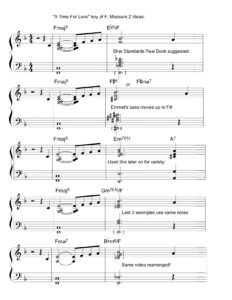
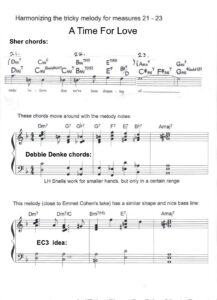
Take a listen to my version complete with improvised intro & solo section, with a coda/cadenza inspired by Emmet Cohen Trio Live in Warsaw April 2023 performance. Note: If I get enough positive reacations and requests I just might share my transcription of EC’s hauntingly beautiful ending…;-)
Check out the links below my video to hear musicians who each did amazing performances of this timeless love song, and enjoy!
Key of F: Pianist Emmet Cohen, bassist Philip Norris, and drummer Kyle Poole: ![]() • Emmet Cohen Trio | “A Time For Love” … (Emmet Cohen Trio Live Warsaw Second Set April 2023)
• Emmet Cohen Trio | “A Time For Love” … (Emmet Cohen Trio Live Warsaw Second Set April 2023)
Barry Harris: Key of Bb: ![]() • Barry Harris Trio (Live At Dug) – A T… (Barry Harris Live at Dug 1995)
• Barry Harris Trio (Live At Dug) – A T… (Barry Harris Live at Dug 1995)
Roy Hargrove Key of Bb: (Opening uses the note F in the bass) ![]() • ROY HARGROVE – A Time For Love (Roy Hargrove Quintet Live At The New Morning July 2007)
• ROY HARGROVE – A Time For Love (Roy Hargrove Quintet Live At The New Morning July 2007)
Bill Evans begins in Key of D, then transitions to Bb: ![]() • Transcripción: A time for love por Bi… (Bill Evans Transcription Nacho Stoppani 2016)
• Transcripción: A time for love por Bi… (Bill Evans Transcription Nacho Stoppani 2016)
Tony Bennett sings in Key of Bb: It’s wise to hear the lyrics if a tune has them. Hear how Tony Bennett emotes the poetic lyrics by Paul Francis Webster ![]() • A Time For Love (Tony Bennett Sony with orchestra 1966)
• A Time For Love (Tony Bennett Sony with orchestra 1966)
